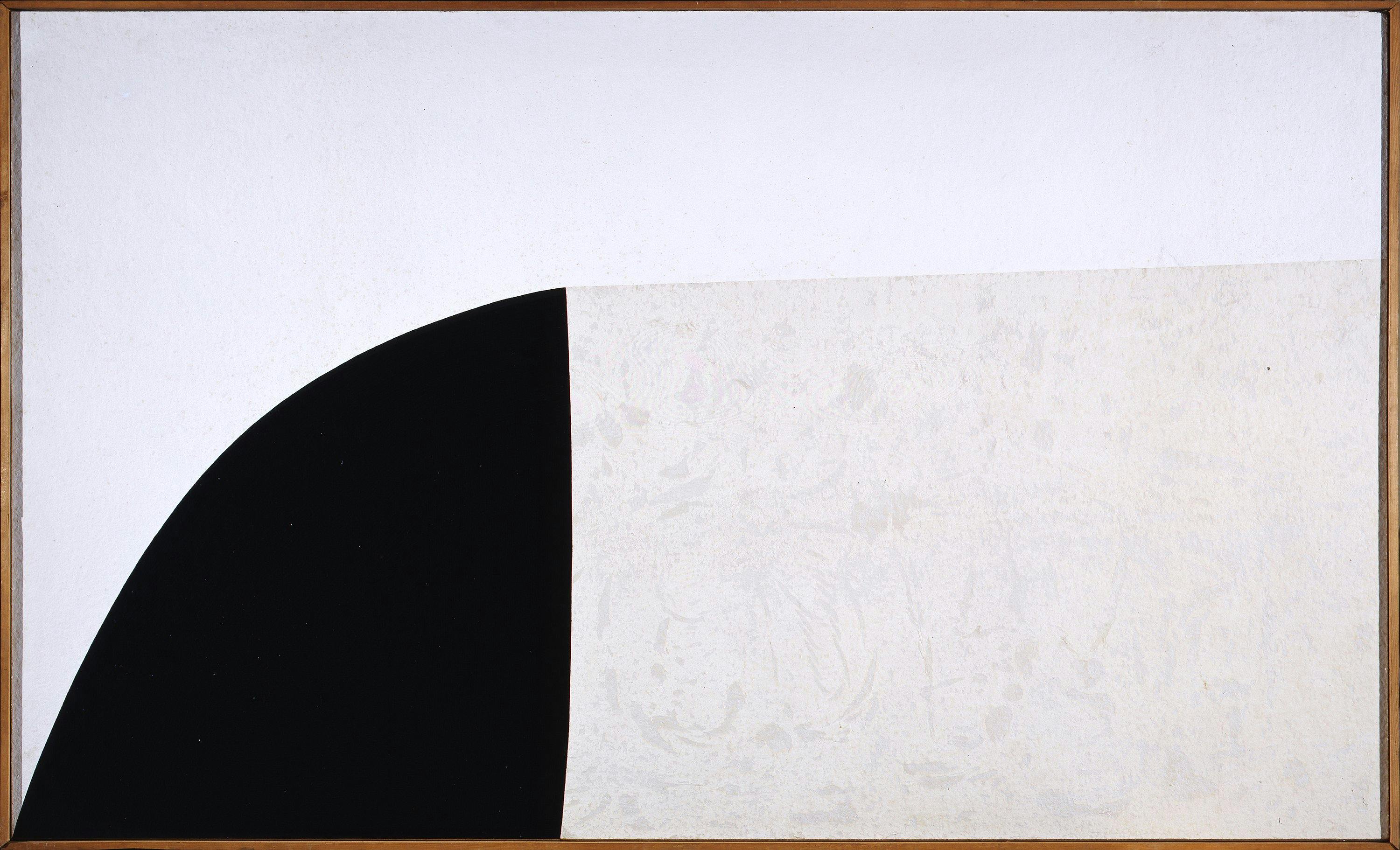Bianco Nero
Alberto Burri (Città di Castello 1915 – Nizza 1995)
One of the most representative figures of twentieth century art, Alberto Burri is famous for his collections created with very unusual materials, from Sacchi (sacks) in jute canvas, to Catrami (tars) to Plastiche (plastics), mediums which the artist interprets with dramatic and participatory gestures. In the fifties and sixties, Burri’s collections played a starring role in helping to define the poetry of the “Informal” movement which spread across Europe and beyond.
This work was taken from “Bianchi-Neri”, a collection which the artist began to develop in the late sixties immediately after his “Combustioni-Plastiche” collection. The contrast between black and white used in the previous collection is continued here, but the dramatic contrast with the materials of his “Combustioni” collection (where cellophane was burnt with an open flame) is replaced by a “reordered vision of reality” which would become the predominant theme of Burri's subsequent works on Celotex and all of his final works in general. “[...] The composition is accentuated by the aesthetic relationship between the black and white which, through the alternation of matte and glossy surfaces, clearly demonstrates the different pictorial zones” (Serafini, p. 126). However, on closer inspection one can see that the black arch and the white rectangle are not strictly aligned; irregularities are introduced (in the border between the black and white and the upper part of the rectangle, which is not perfectly parallel to the base): once again, in this series Burri is a long way from cold abstractism yet almost imperceptibly animates his work with originality, transforming it into pulsating mirror of the reality around it; this theme could already be seen in his previous works and would continue in the final series of the artist’s career, the Celotex (fiberboard) and Cretti (concrete) collections.
The work was donated by the artist to the Gallery of the Statues and Paintings of the Uffizi in 1994.
